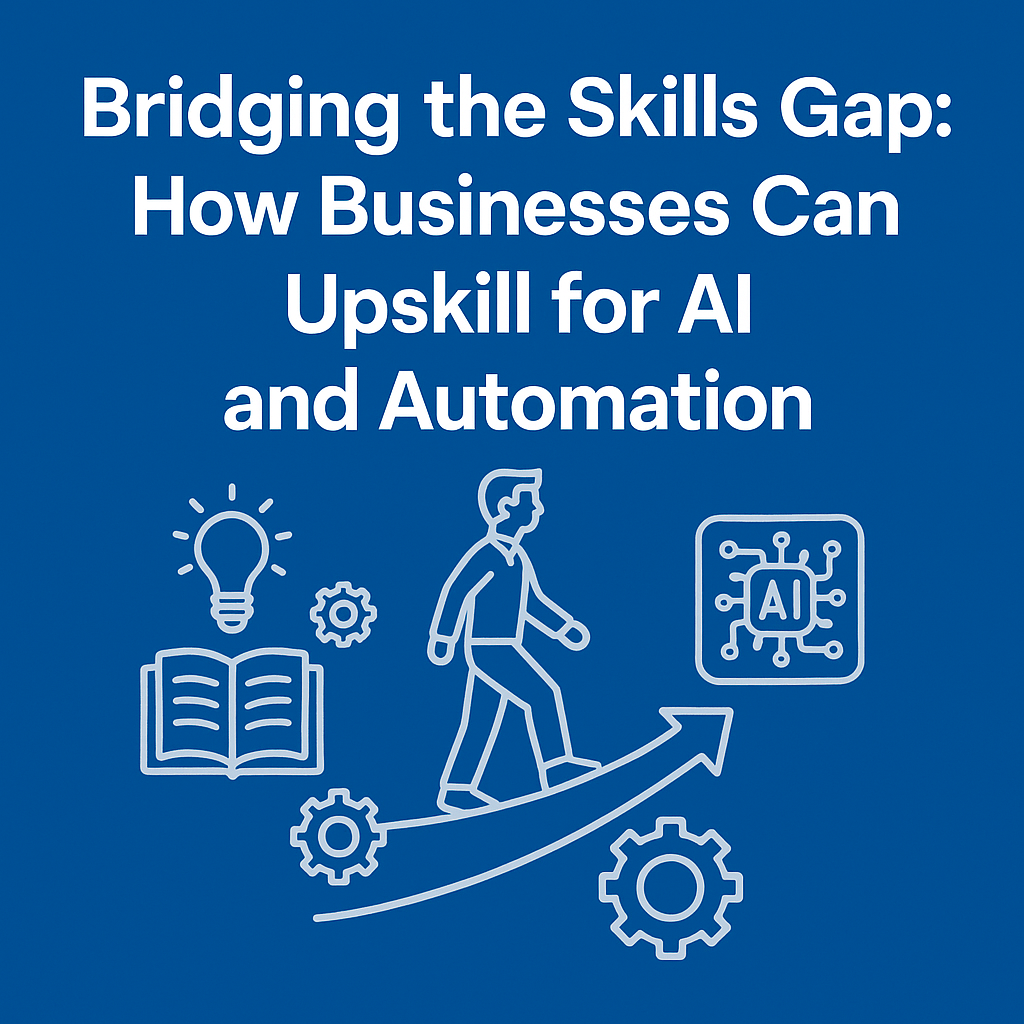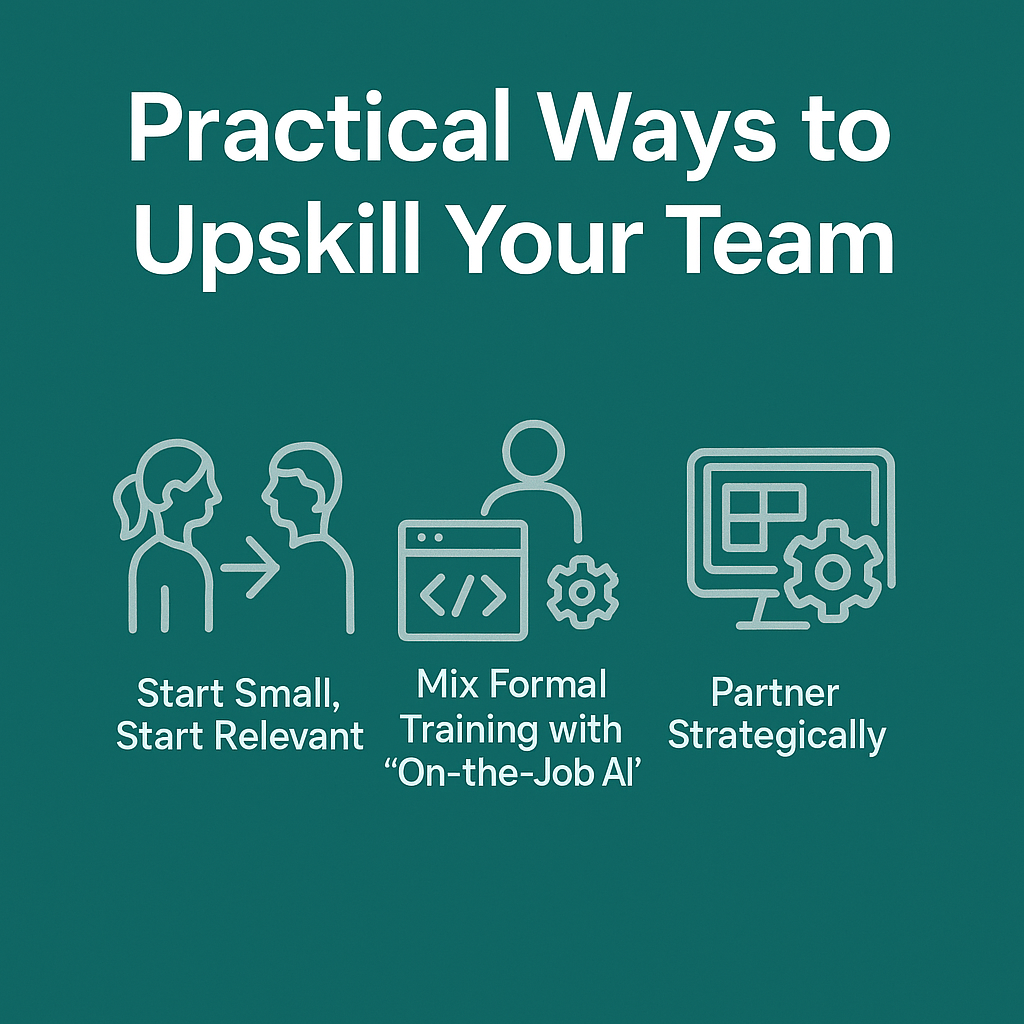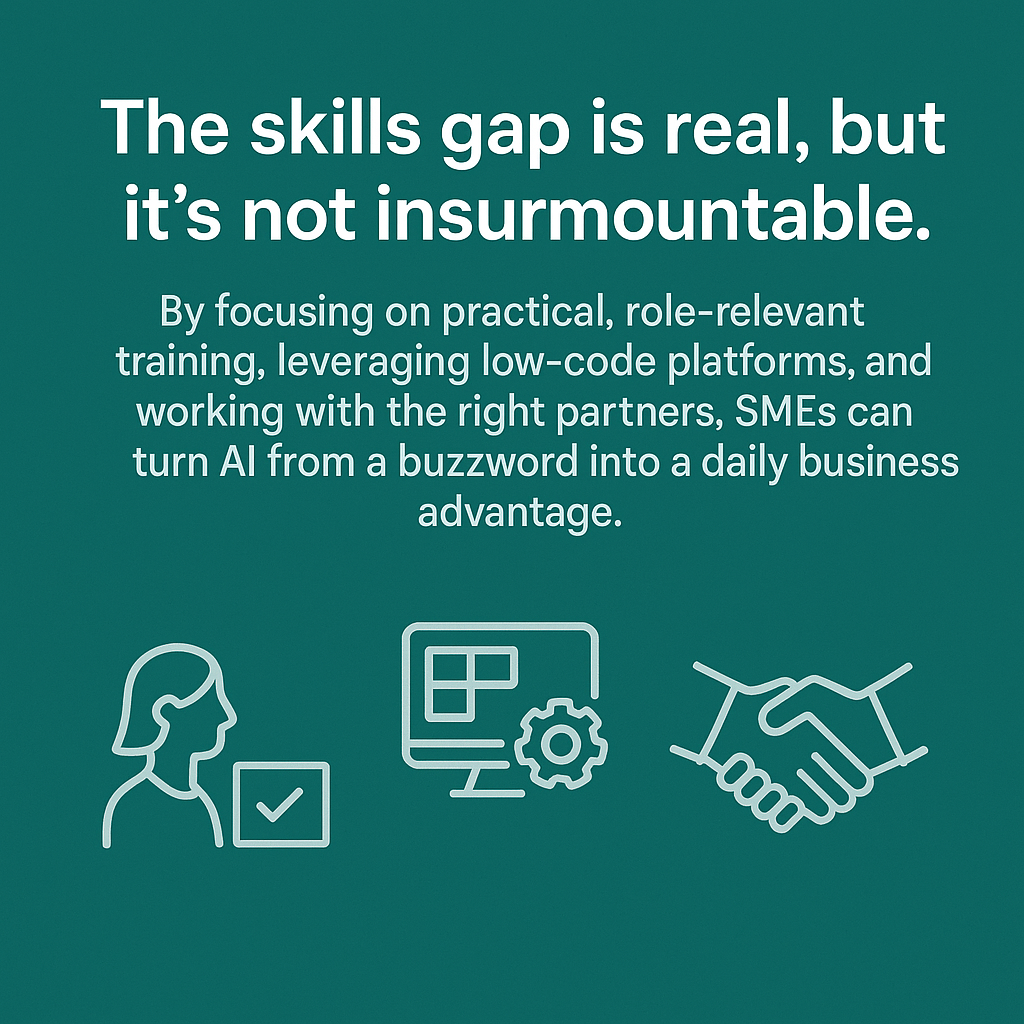AI and automation are no longer “emerging technologies.” They’re here, shaping how businesses operate, cut costs, and compete. But while the opportunities are huge, there’s a barrier stopping many small and medium-sized enterprises (SMEs) from unlocking the benefits: the skills gap.
In fact, recent surveys show that while over 60% of UK SMEs see AI as critical to future growth, fewer than 1 in 5 feel they have the right skills internally to make it happen.
So what does “bridging the gap” really look like - and how can SMEs upskill without breaking budgets or overwhelming their teams?

Why the Skills Gap Exists
- AI moves faster than training
Tools evolve monthly. By the time a team feels comfortable, there’s a new update or feature. - SMEs can’t always hire specialists
Competing with big corporates for scarce AI talent is costly and often unrealistic. - Fear of complexity
Many employees see AI as “too technical” or “not my job,” leading to resistance or underuse.
Why Bridging It Matters
- Unlock ROI: Without skills, expensive tools gather dust.
- Reduce risk: Untrained staff often use “shadow AI” (free tools or risky shortcuts), which creates compliance and security issues.
- Boost morale: Teams who understand and trust AI see it as an enabler, not a threat.
Practical Ways to Upskill Your Team

1. Start Small, Start Relevant
Upskilling doesn’t mean sending your team on year-long coding courses. Start with practical training tied to real tasks:
- Automating expense approvals in Xero
- Using Power Automate for document workflows
- AI tools for summarising reports or handling first-line customer queries
When learning is applied to everyday pain points, adoption sticks.
2. Mix Formal Training with “On-the-Job AI”
- Short workshops on data security and prompt-writing.
- Shadowing live projects where automation is being rolled out.
- Creating “AI champions” in each department who share knowledge peer-to-peer.
This blend ensures skills don’t just stay theoretical.
3. Leverage Low-Code and No-Code Tools
Many modern automation platforms don’t require coding knowledge. Teaching staff how to build simple workflows in Zapier, Power Automate, or HubSpot can empower non-technical teams to innovate safely.
4. Partner Strategically
Not every SME needs a full-time AI team. Working with a consultancy like Fiftyminds means your business can:
- Get expert guidance on where AI makes sense.
- Have custom solutions built for your needs.
- Train your team in the exact systems you’ll be using — not generic “AI theory.”
5. Keep It Human
AI isn’t about replacing staff — it’s about enabling them. Communicate clearly: the goal is to remove repetitive tasks, not people. Position upskilling as career development, not a threat.
The Bottom Line

The skills gap is real, but it’s not insurmountable. By focusing on practical, role-relevant training, leveraging low-code platforms, and working with the right partners, SMEs can turn AI from a buzzword into a daily business advantage.
At Fiftyminds, we specialise in not just building the systems, but ensuring your people are confident and capable in using them. Because the best AI solution isn’t just about the tech - it’s about the team that powers it.
Ready to bridge the skills gap in your business? Let’s talk.
From Spreadsheets to Smart Systems: How Businesses Can Embrace Automation Without the Overwhelm
For years, spreadsheets have been the backbone of small and medium-sized businesses (SMEs). They track...
5 Everyday Tasks AI Can Do Better | (So Your Team Doesn’t Have To)
Every week, businesses hear the same story: “AI is coming for your jobs.” But the...
The Human Side of AI: Why People Still Matter More Than Ever
Every week, new headlines warn us that “AI is coming for our jobs.” It’s an...
Bridging the Skills Gap: How Businesses can upskill for AI and Automation
AI and automation are no longer “emerging technologies.” They’re here, shaping how businesses operate, cut...
The Hidden Cost of Manual Processes -And How AI Pays for Itself
For many small and medium-sized businesses (SMEs), admin feels like an unavoidable part of the...
How AI and Automation are Reshaping Efficiency in Construction
Lorem Ipsum has been the industry’s standard dummy text ever since the 1500s. In construction,...
